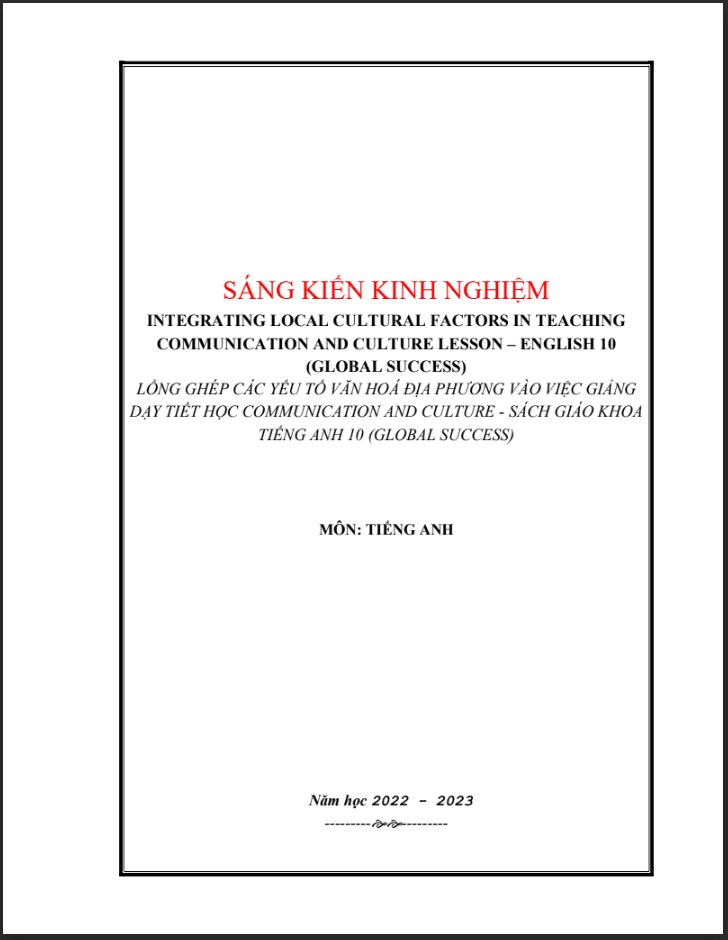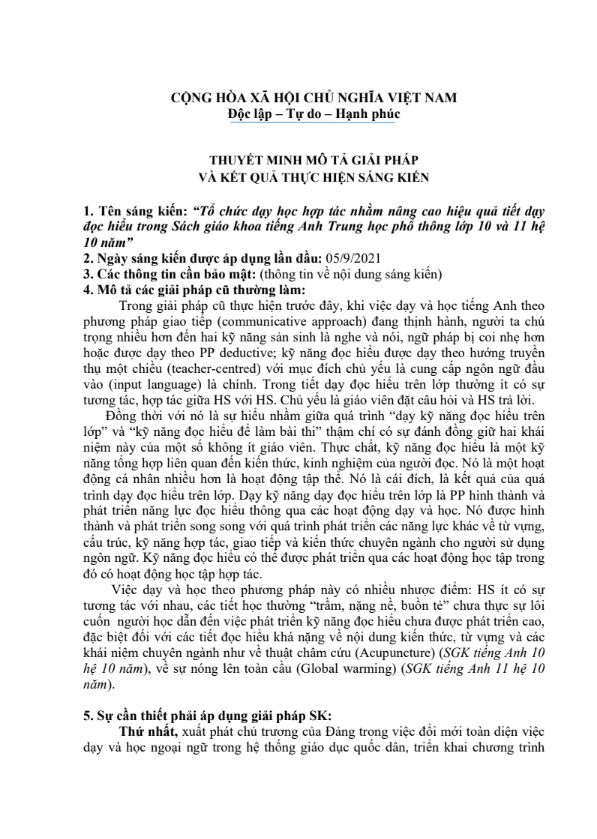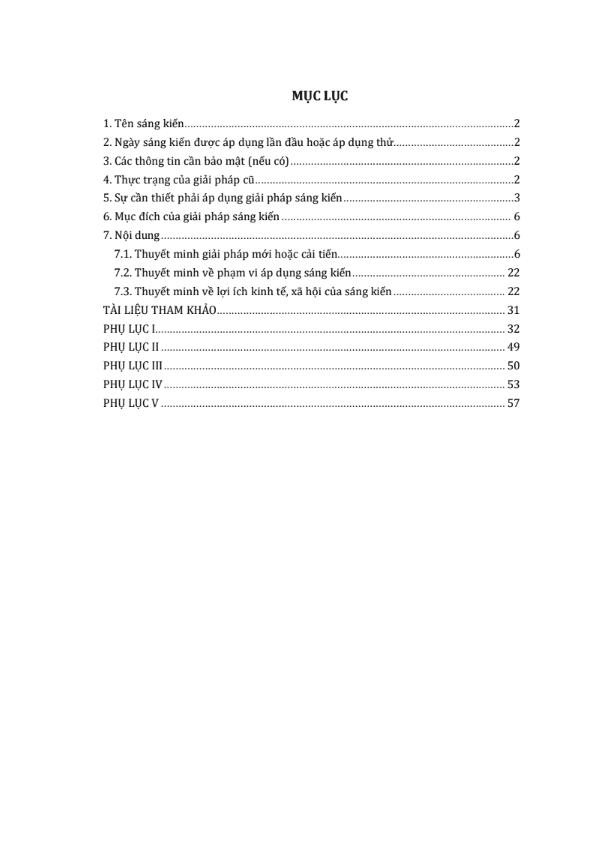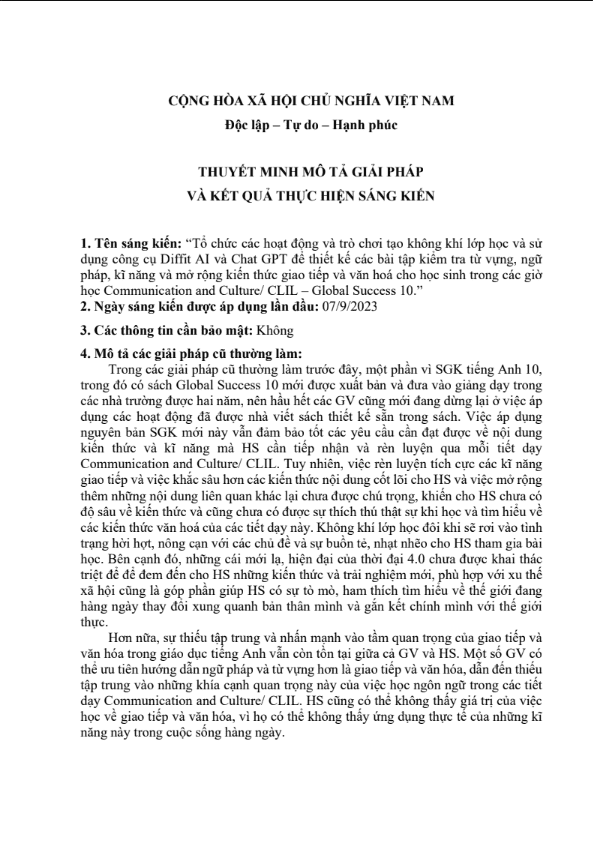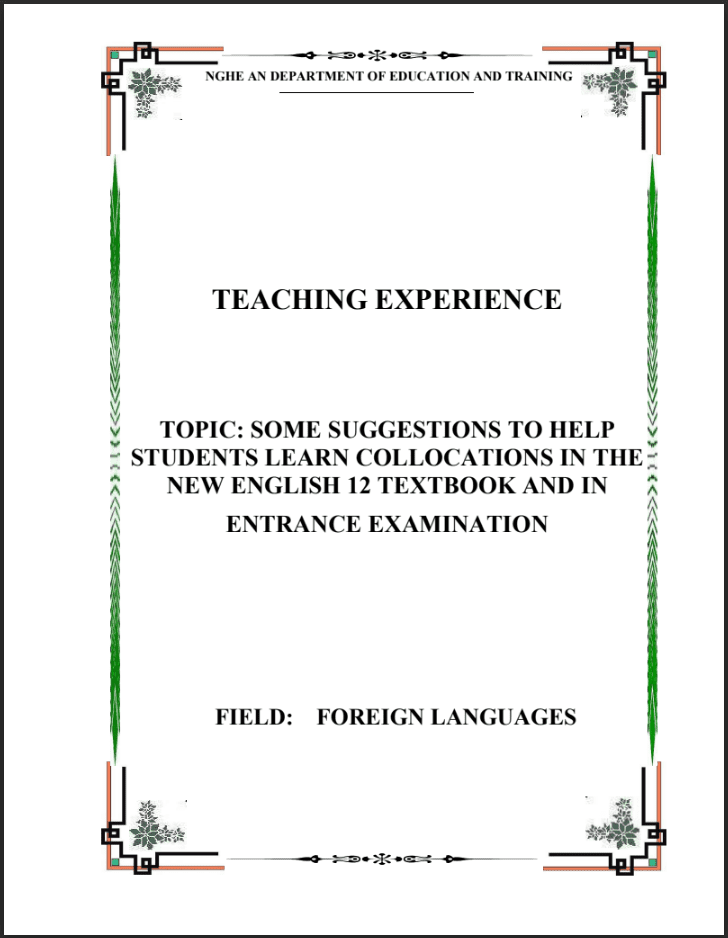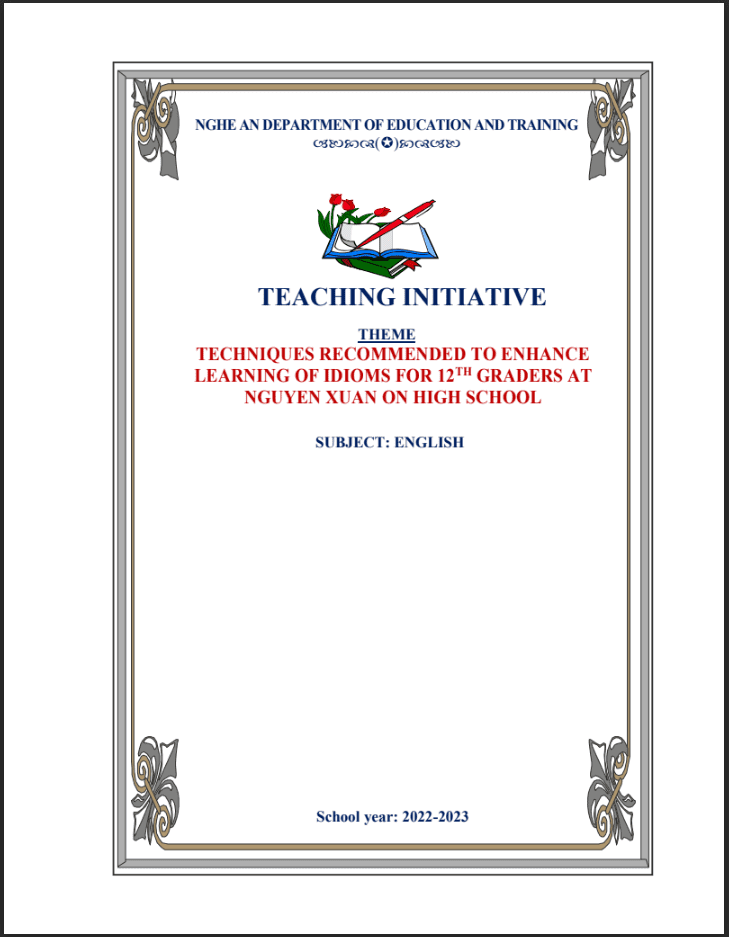SKKN Integrating local cultural factors into teaching communication and culture lesson in the textbook English 10-Global Success
- Mã tài liệu: MP0085 Copy
| Môn: | Tiếng Anh |
| Lớp: | 10 |
| Bộ sách: | Global Success |
| Lượt xem: | 468 |
| Lượt tải: | 6 |
| Số trang: | |
| Tác giả: | Nguyễn Thị Minh Châu |
| Trình độ chuyên môn: | Cử nhân đại học |
| Đơn vị công tác: | THPT Huỳnh Thúc Kháng |
| Năm viết: | 2022-2023 |
| Số trang: | |
| Tác giả: | Nguyễn Thị Minh Châu |
| Trình độ chuyên môn: | Cử nhân đại học |
| Đơn vị công tác: | THPT Huỳnh Thúc Kháng |
| Năm viết: | 2022-2023 |
Sáng kiến kinh nghiệm “Integrating local cultural factors into teaching communication and culture lesson in the textbook English 10-Global Success”triển khai gồm các biện pháp nổi bật sau:
Mô tả sản phẩm
PART 1: INTRODUCTION
1.1. Rationale
In the past few decades, the field of English Language Teaching has started to emphasize the linguistic and cultural diversity rather than focusing only on teaching aspects related to the English language. Therefore, cultural awareness has become an integral part of English classrooms. The need for cultural awareness cannot be ignored and in order to make communication sufficient, it needs to be accompanied by multidimensional cultural awareness since communication almost never exits culture – free.
In Vietnam, however, the role and status of culture in language teaching has always been a challenging issue for teachers. Their conception and opinion may be very different regarding the meaning of culture and the possibilities of incorporating cultural content into the language teaching process. These differences can result from their previous experience as language learners, from what they have learnt along their training process, and from the various possibilities they have had to come into direct contact with the target culture. The cultural content taught in language classes may also be influenced by the extent of differences between the native and target cultures. Compared to grammar or vocabulary, culture is more difficult to define; therefore, it is not clear what and how should be taught.
However, we strongly believe that some principles, recommendations, and practical ideas regarding the introduction of cultural content must be included in the curriculum of language teaching methodology. Teacher trainees need to develop a theoretical and practical awareness of what culture means and in what forms it may be present in the language classroom.
As teachers of English, we are well-prepared to meet this challenge. In order to raise students’ awareness of culture in general and local culture in particular, we have been motivated to do a research into “Integrating local cultural factors into teaching communication and culture lesson in the textbook English 10-Global
Success”.
1.2. Aims and objectives
This study investigates how to integrate local cultural factors into teaching communication and culture lesson effectively.
1.3. Scope of the study
This study will be carried out in a local high school among the population of 10th graders. This study will be restricted to language learners using the textbook English 10-Global Success in their English classes, which focus on communication and culture lessons. Thus, the findings are limited to this population and context.
Further studies among different levels of students or courses could yield more information and techniques on how this application could be used to its fullest to benefit student’s learning experience in a holistic way.
1.4. Significance of the study
The present study has significance for future practice, research and policy. The results of this study could be used by several groups of teachers. The findings might assist EFL teachers in improving the design of their lessons.
PART 2: CONTENT
2.1. Theoretical background
2.1.1. The concept of culture
2.1.1.1. Definition
The word ‘culture’ has a very broad concept, embracing all aspects of human life. Samovar, Porter, and McDaniel (2010) have stated that culture has five main components which can distinguish one culture from another. They are history, religion, values, social organizations and language. A history of an area can build the identity and behavior of the history’s owners. Similarly, the influence of religion and values can be seen in every aspect of the culture that makes the owners of that culture have rules to follow; social organizations such as families and communities, and government also reflect our culture and language is an essential element in order to help in culture transmission. Culture can be learned, shared and passed down from generation to generation, based on symbols and dynamic integrated systems.
In a broad sense, culture refers to what people believe, what people think, what people create, and the like. In a narrow sense, culture means an identifiable group with shared beliefs and experiences, feeling of worth and value embedded in the experience and shared interest in a common historical background (Brislin, 19981:2).
In terms of the types of culture, Appelbaum (1997) proposes two aspects of human culture, namely material culture and non-material culture. Material culture concerns ‘all physical objects made by the members of a particular society to assist in shaping their lives’. They include technological devices, goods consumed, the place of worship, types of cuisine, offices, stores, vehicles, and the like. Nonmaterial culture deals with the ideas shared by people in a particular society which includes language, values, beliefs, customs, habits, rules, conventions, institutions, organizations, and others. Such types of culture have to be taken into account when English language teachers carry out the process of English language teaching and learning.
2.1.1.2. The relationship between language and culture
According to Nault (2006, p. 314), “Language and culture, it could be said, represent two sides of the same coin”. Many researchers have found close relationships between language and culture whereby language and culture mutually reflect each other hence the language is a reflection of the culture and the culture is reflected in the language. Liddicoat, Papademetre, Scarino and Kohler (2003) have argued that language and culture are closely related to each other, a language is part of a culture, and culture is part of a language. The linkage between them cannot be separated, if so, the benefits of one of them will then be lost. Through the use of language we can understand the values, beliefs, and perspectives that exist in a culture. On the other hand, when we consider the language as communication, language cannot be separated from the cultural context in which the communication occurs. Without knowledge of the culture, it would be difficult to understand meanings in the language (Seelye, 1993).
2.1.2. The importance of teaching culture to language learners
Language education researchers have classified different types of cultural contents in language lessons to suit the purposes of their study. Kramsch (1995), for example, discusses three different “links” between language and culture. Universal links imply the culture that can be shared by various language speakers across social and national boundaries. National links refer to the cultures separated by the national boundaries such as French “civilization or English “culture”. Local links are related to the culture expressed through the words and actions of everyday speakers in everyday life. Cortazzi and Jin (1999) categorize three types of cultural information that can be represented in language lessons: the target culture, the source culture and the international culture. The target culture exposes learners to the culture of countries where the language they are learning is spoken as the first language. Learning the target culture, learners may be more interested in learning the language, or develop positive attitudes towards these language-speaking people and countries. The source culture draws on the learners’ own culture. This culture can help students to develop a positive cultural identity.
2.2. How to integrate local cultural factors into teaching communication and
culture lesson effectively
2.2.1. The overview of the textbook English 10 (Global success)
The Vietnam Education Publishing House has compiled the English 10 – Global Success – Student’s book in accordance with the “General education program: English subject program” from grade 3 to grade 12. This program was issued through Circular No. 32/2018/TT-BGDDT on December 26, 2018, by the Ministry of Education and Training. The book follows a series of English books for primary school (English 3, English 4, English 5) and English for secondary school (English 6, English 7, English 8, English 9).
The English 10 – Global Success – Student’s book has been designed in a communicative manner to help students develop their ability to communicate in English. This is achieved through the use of corpus (sounds, vocabulary, and grammar), in the four forms of listening, speaking, reading, and writing. Additionally, the book has been designed in a learner-centered way to promote the activeness and initiative of students. All teaching activities have been organized to create optimal conditions for students to participate in activities that help them practice and develop their English communication ability.
TÀI LIỆU LIÊN QUAN
- 7
- 105
- 1
- [product_views]
- 5
- 173
- 2
- [product_views]
- 4
- 165
- 3
- [product_views]
- 4
- 129
- 4
- [product_views]
100.000 ₫
- 6
- 434
- 5
- [product_views]
100.000 ₫
- 2
- 507
- 6
- [product_views]
100.000 ₫
- 9
- 546
- 7
- [product_views]
100.000 ₫
- 4
- 409
- 8
- [product_views]
100.000 ₫
- 2
- 595
- 9
- [product_views]
100.000 ₫
- 0
- 538
- 10
- [product_views]

